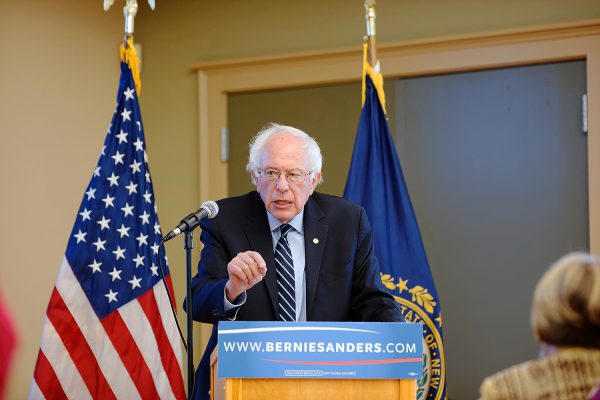
Bernie Sanders argues he can defeat Donald Trump by convincing more Americans to vote. A self-declared socialist may lose some swing voters by campaigning on nationalizing health insurance and raising middle-class taxes, but he can make up for it, Sanders argues, by mobilizing young and working voters.
It’s always seemed unwise to me to bet on potential voters rather than actual voters. Now that skepticism has been substantiated.
Study
First we got a study from political scientists David Broockman and Joshua Kalla, who found that nominating Sanders really would convince Americans who would otherwise vote for a moderate Democrat to vote for Trump.
They’re not a huge group, but they are exactly the swing voters who could make the difference in a close contest.
The margin of victory in Michigan, Pennsylvania and Wisconsin was under 1 percent in 2016. If those three states had gone the other way, Hillary Clinton would be president.
The reason Sanders nevertheless polls about as well against Trump as his center-left rival, Joe Biden, is that younger voters prefer him and might sit out the election, or vote for a third party, if Sanders isn’t the Democratic nominee.
But that assumes those Bernie-or-bust voters will turn out at all. Youth turnout was 43 percent in the last election. In order to make up for losing centrists, Sanders would need to raise youth turnout to a record 54 percent, surpassing even the 48 percent Barack Obama managed in 2008.
Primaries
Sanders hasn’t demonstrated he can do that in the primaries.
Turnout in Iowa was low. Turnout in New Hampshire and Nevada was up, but not by much. Turnout surged in South Carolina and the Super Tuesday states — for Biden.
In Virginia, which voted Republican as recently as 2004, turnout in the Democratic primary went up from .8 million in 2016 to 1.3 million. Almost all of those new voters were for Biden, Michael Bloomberg and Elizabeth Warren. Sanders won just 30,000 more votes in Virginia than he did in the 2016 primary.
In North Carolina, which Democrats haven’t won in a presidential election since 2008, turnout went up from 1.1 to 1.3 million. Sanders was down 140,000 votes.
In Texas, turnout went up from 1.4 to two million. Sanders gained some 40,000 votes, but Biden still prevailed — and he and Bloomberg won more votes combined than Clinton did in the Texas primary four years.
California is still counting its votes, but so far Sanders is down 1.3 million from 2016.
Even if Sanders manage to drive up turnout in California, it will do Democrats little good in November. The state will vote for any Democrat. Sanders would need higher turnout in swing states like Iowa and North Carolina, and to offset losing centrist voters in states like Virginia. If he can’t do that in a Democratic primary, why should we believe he could in a general election?
